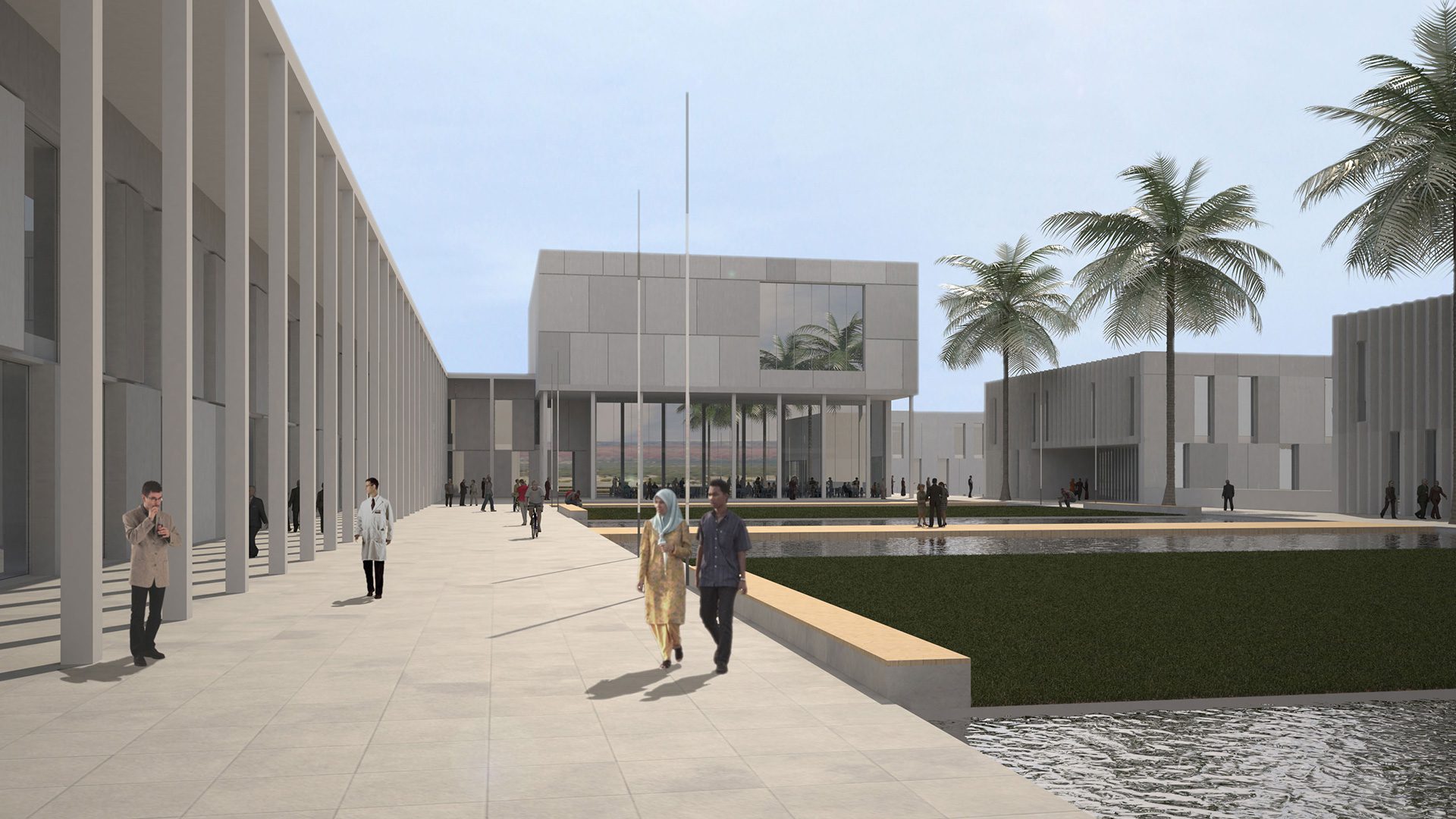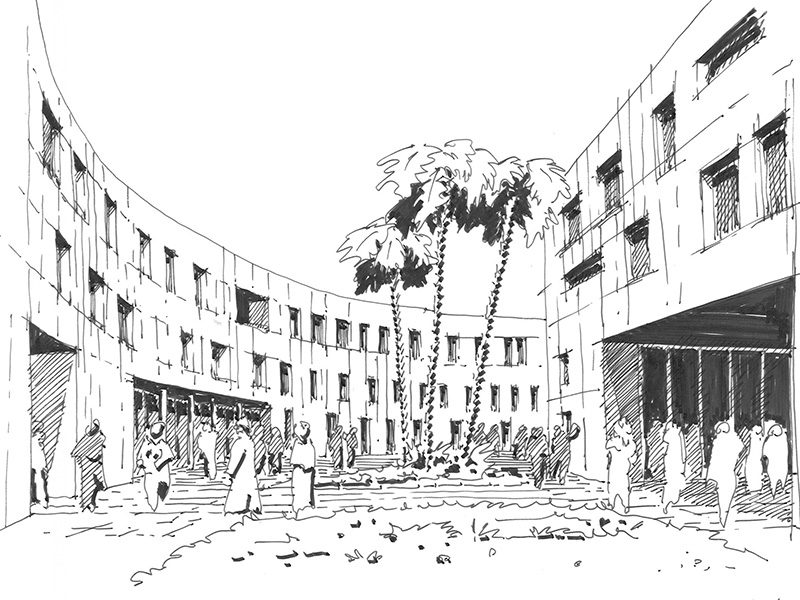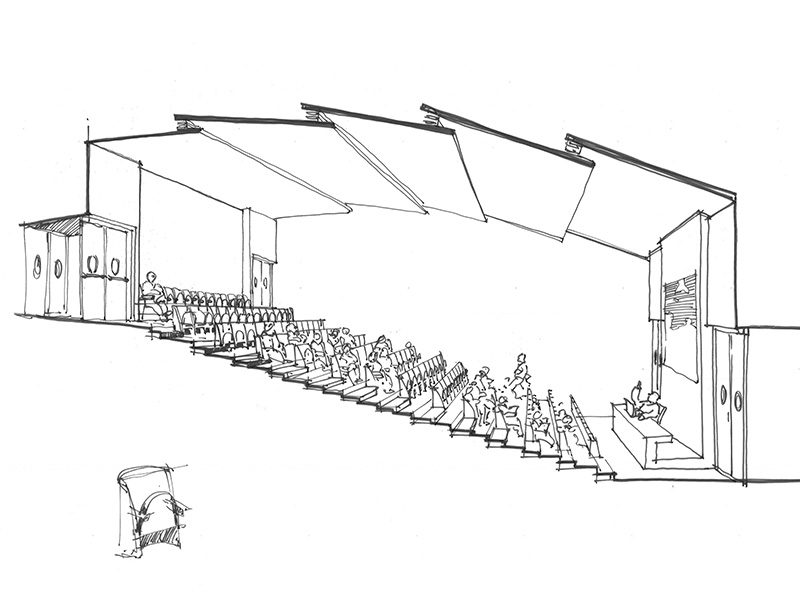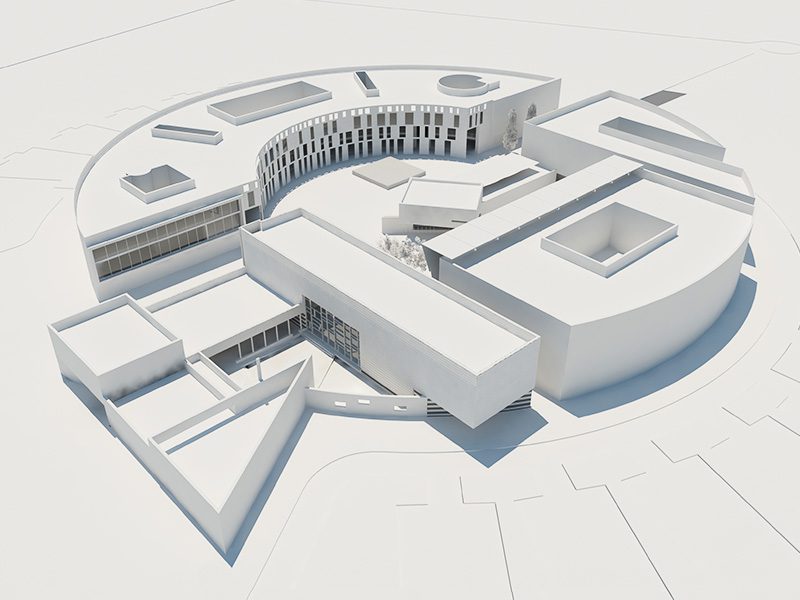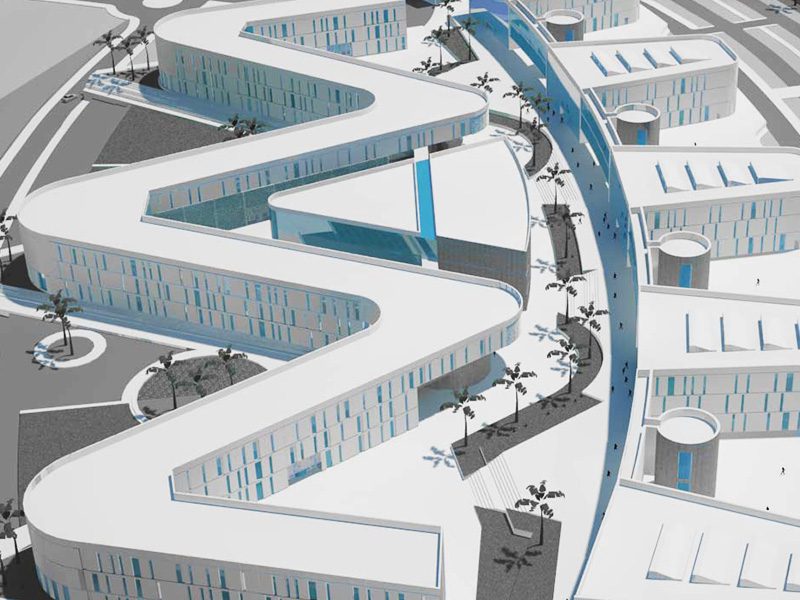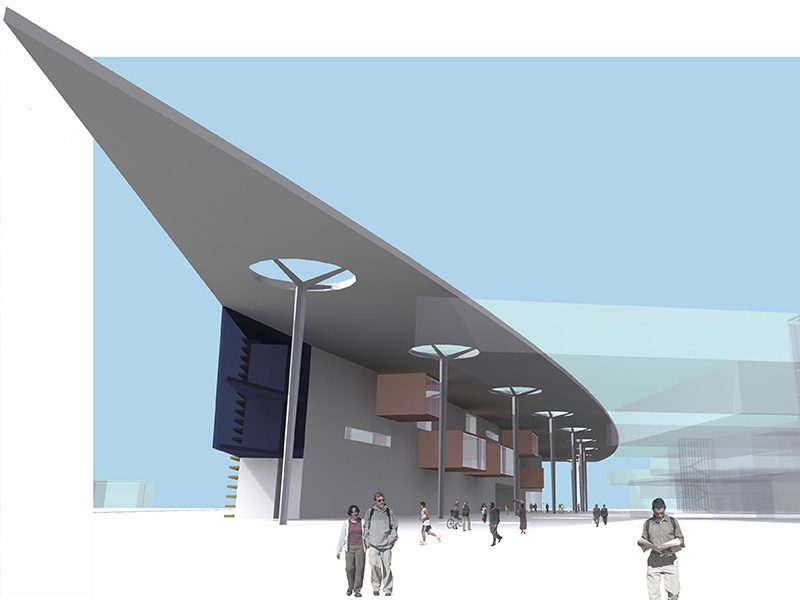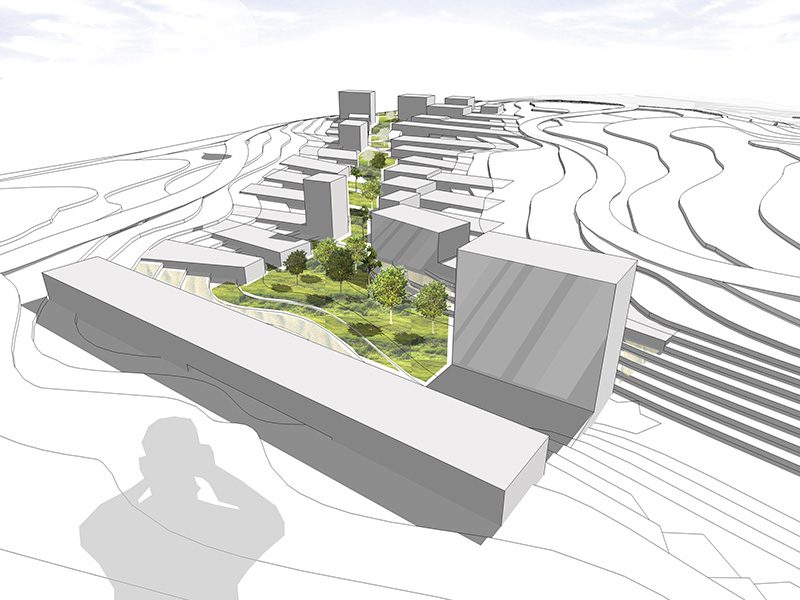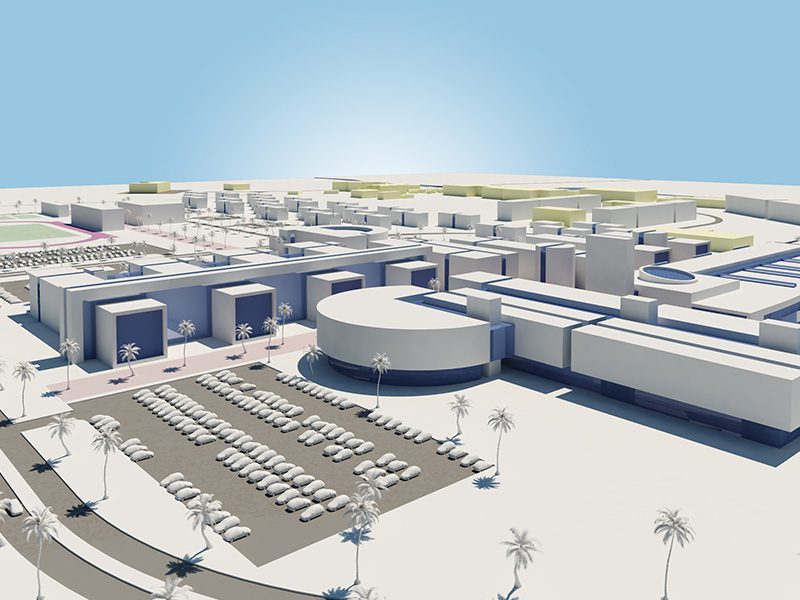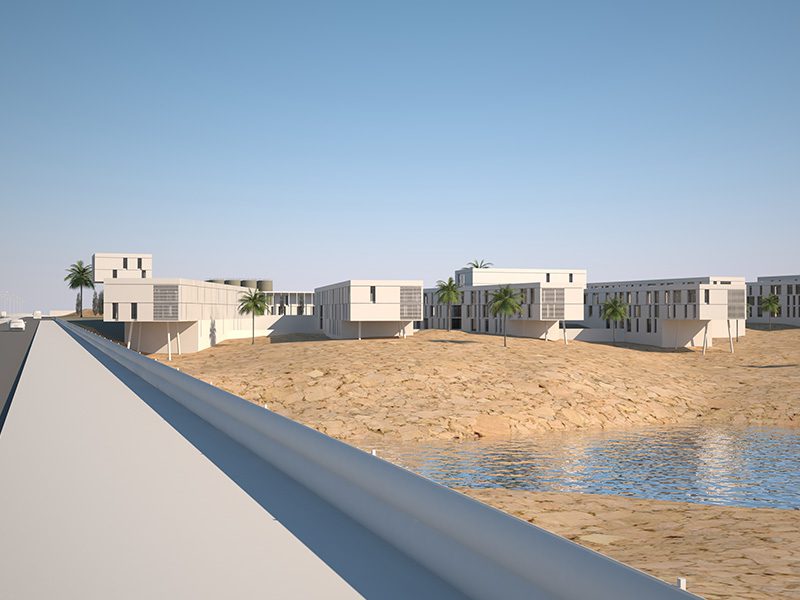Client
ODAC / Argus Ltd
Dates
2009
Value
£680m
Area
676150 sqm


Diverse, unique and geographically sensitive campuses
In 2007, Keppie was appointed to design eight university campuses as part of a twenty-seven campus development programme. We were approached by Argus; a logistics organisation working on infrastructure projects for the Libyan Government. ODAC (Organisation for Development of Administrative Centres) became our Client who we developed the educational prospectus with.
The opportunity to design a programme of university campuses of the scale and diversity offered by this project is unique. Although part of a national educational framework, the geographical context for campuses in the west is completely different to those in the eastern part of the country. Each campus has individuality appropriate to its regional climate and surrounding environment.
Each of our campuses features a design of unique character. A series of diagrams were developed that explained our philosophy of how each campus should be organised and how individual faculties would fit into this strategy. This approach is based on four tiers of planning, taking the design from the macro to the micro such that changes in accommodation for individual faculties are disciplined by the strength of the overall development control masterplan.
The Campuses:
- The Al-Jefara Campus will be a new major branch location of Al Fetah University. The site for the campus is located almost 50km south west of Tripoli. The new facilities cater for 8,850 students in faculties that include arts & media, business management, information technology, hydrology & environment, science, architecture & town planning, tourism, archaeology and education.
- The Al Khoms Campus will be the new main branch location for Al-Marghib University. The site is located on the western Mediterranean edge of Libya approximately 100km east of Tripoli. The brief called for a new university campus serving 6,050 students being taught in faculties that include engineering and medicine.
- The Al-Marj Campus is a secondary branch of the main Garyounis University on the eastern Mediterranean edge of Libya. Its location is to the north-east of the town centre, immediately at the edge of a new 10,000 unit housing district. The brief called for a new university campus housing 2,100 students in faculties that include nursing, management & business and education.
- The Darnah Campus is a branch of the Omar-Al-Mukhtar University. The site is located in Darnah almost two hundred and fifty kilometres from Benghazi on the eastern side of the country’s Mediterranean edge, a sizable coastal town with a fairly large population. The brief called for a new campus to replace the existing facilities, catering for two and half thousand students in new faculties. These faculties include law, economics & accounting, civil & architectural engineering and languages.
- The Nasser Campus was planned as an international university becoming home to twelve thousand students from countries throughout the African continent and beyond. Sugh el Ahad is a small town around forty kilometres south of Tripoli. The small education facility currently on the site will be expanded into a prestigious international seat of learning.
- The Tarhuna Campus was the most remote and barren of the eight locations. The challenge of the site context was to create a sense of identity where none presently exists, one that signals a place of learning and takes as its starting point the requirements of the local community as well as the proposed faculties.
Seventeen hundred students will be taught in faculties which include agriculture and veterinary science, languages and law. - Located on the Mediterranean coastal road west of the town of Zliten, the new university campus will be a branch of the Al Marghib University. The site is directly adjacent to, and overlooks the Mediterranean Sea, approximately one hundred and fifty kilometres east of Tripoli. The brief called for new facilities to serve 3,650 students in faculties that include economics & accounting, science and education.
